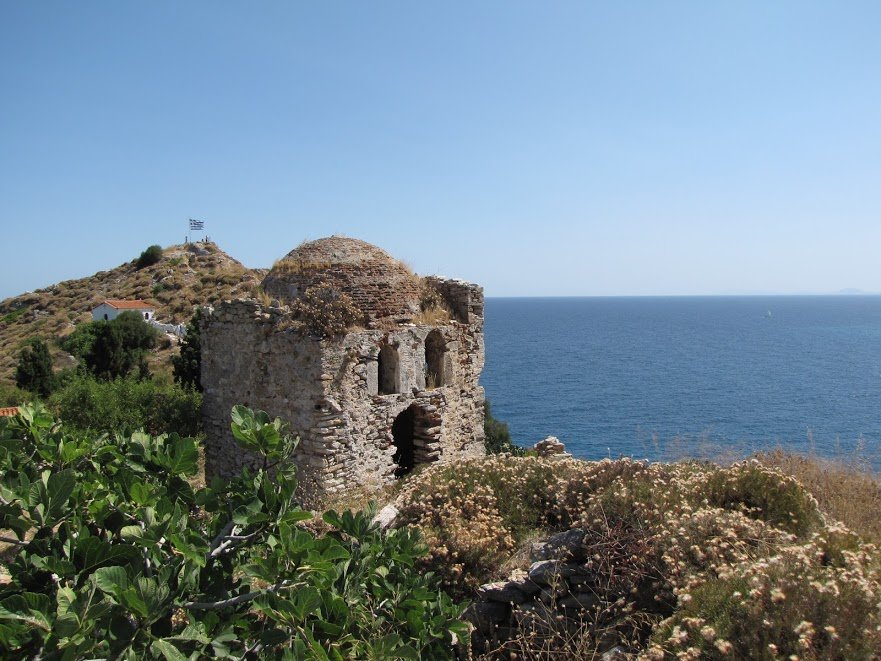The constant pirate raids around the middle of the 14th century, forced the inhabitants to abandon the ancient Town and set up their city in the Castle, a peninsula and natural fortress in the northern part of the island. To enhance this natural fortress, they built walls with embrasures and cannons openings. The communication between the fortress and the land was done with a wooden drawbridge, which united the fortress gate to the opposite hill. In case of an emergency, the bridge was dragged to the interior of the castle, thus preventing the entry of enemies. Above the gate there was a terrace with a scalding bowl.
From its foundation until 1453 the Castle was under Byzantine rule. Then the Venetians took over until1538 and then the Turks until 1821. For a short period of time (around 1660), it went again under Venetian rule. All these years the life of the inhabitants was very difficult. Apart from the constant raids of the pirates and conquerors, they also had to face the problem of lack of space inside the fortress. The houses were small and built very close to each other. There were more than twenty churches, a mosque without a minaret (remnant of the Turkish occupation) and tanks for water. The cemetery was situated outside the city.
The Castle was abandoned in 1830 with the establishment of the independent Greek state. Today you can still see four churches, a part of the wall with the gate, the terrace with the scalding bowl, the almost destroyed mosque, some ruins of the Turkish Government House, two tanks of water and a cannon.



